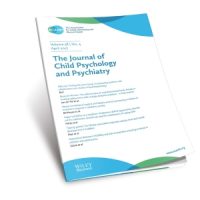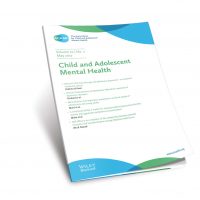This section of the site contains selected open access papers from our journals:
Use the links above to access the index of JCPP and CAMH.
This section of the site contains selected open access papers from our journals:
Use the links above to access the index of JCPP and CAMH.

“Basic science and treatment innovation” by Jonathan Green
Read moreAlbertine J. Oldehinkel
Background
Sex refers to biological differences and gender to socioculturally delineated masculine and feminine roles. Sex or gender are included as a covariate or effect modifier in the majority of child psychology and psychiatry studies, and differences found between boys and girls have inspired many researchers to postulate underlying mechanisms.

“Let’s talk about sex – the gender binary revisited” by Albertine J. Oldehinkel
Read more
“The conundrums of human development – implications for the study of child and adolescent disorder” by Alice M. Gregory
Read more
“The continuing contributions of MTA over nearly two decades to initial attention-deficit hyperactivity disorder pharmacotherapy and long-term clinical course” by Michael H. Bloch
Read more
“Finding the silver lining: incorporating resilience and adaptiveness into studies of psychopathology” by S. Alexandra Burt
Read more
“Pharmacotherapy and adolescent depression – an important treatment option” by Bernadka Durbicka & David Brent.
Read more
Bernadka Dubricka, David Brent
Abstract
Over the past decade, rates of depression and of suicide in adolescents have been increasing (Collishaw, Journal of Child Psychology and Psychiatry, 56, 2015, 370; Bor et al., The Australian and New Zealand Journal of Psychiatry, 48, 2014, 606). At the same time, there is some evidence that rates of diagnosis and, in the US at least, referral for depression in adolescents has been declining (Libby et al., Archives of General Psychiatry, 66, 2009, 633; John et al., Psychological Medicine, 46, 2016, 3315).

Martino Belvederi Murri, Gabriella Ferrigno, Simona Penati, Caterina Muzio, Giulia Piccinini, Marco Innamorati, Federica Ricci, Maurizio Pompili and Mario Amore
Background
Increasing evidence supports that mentalization deficits may have a role in the genesis of young age depression; however, few studies examined this issue in clinical populations.

“Child psychology and psychiatry – using science to make a difference” by R. M. Pasco Fearon
Read more